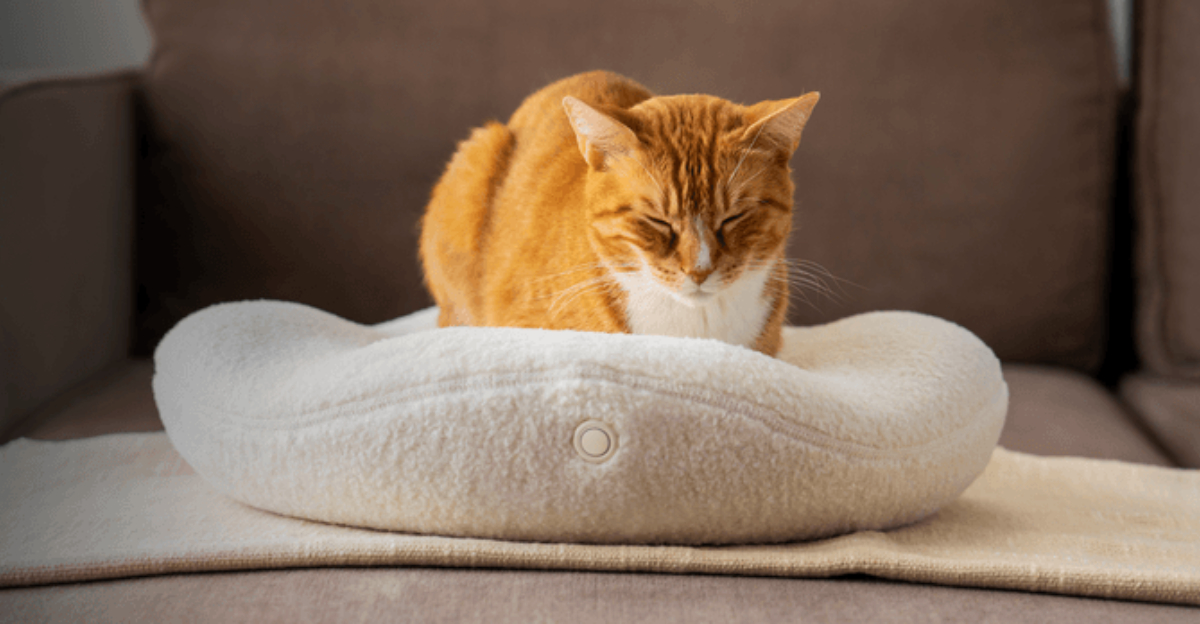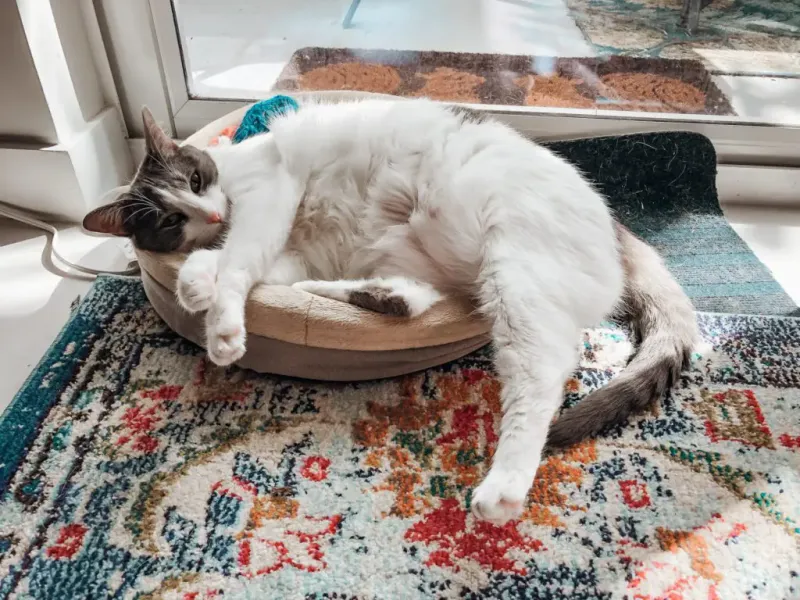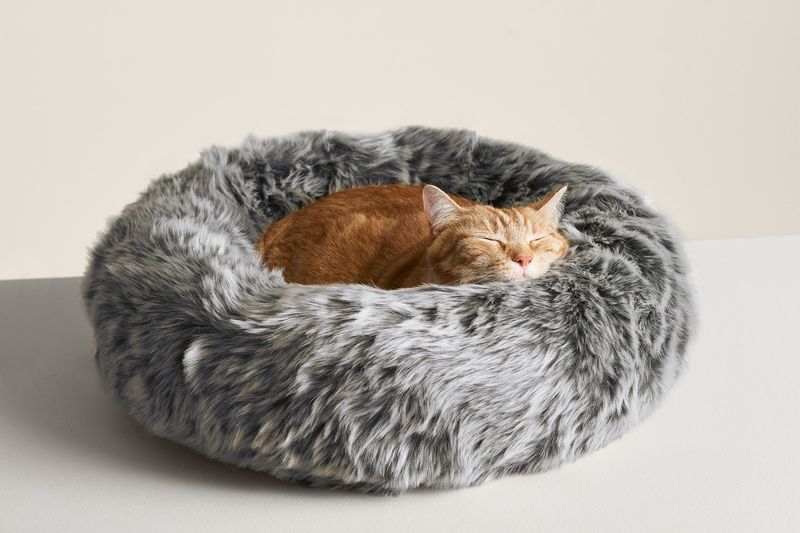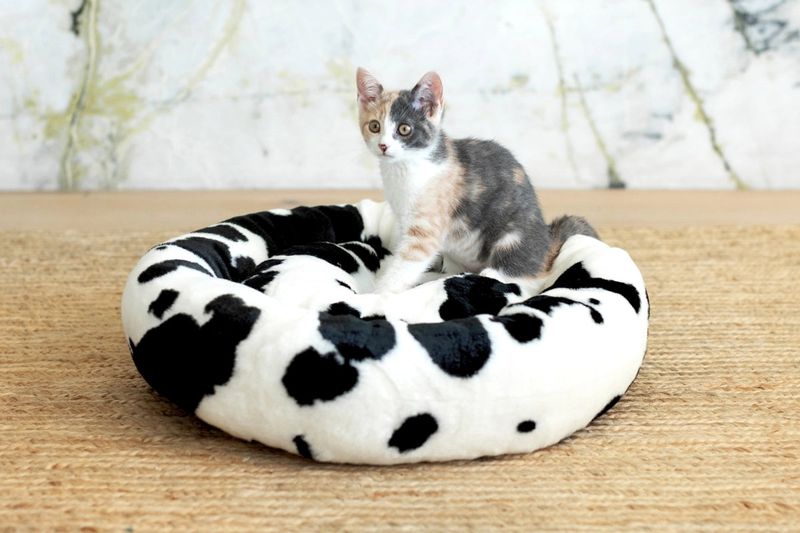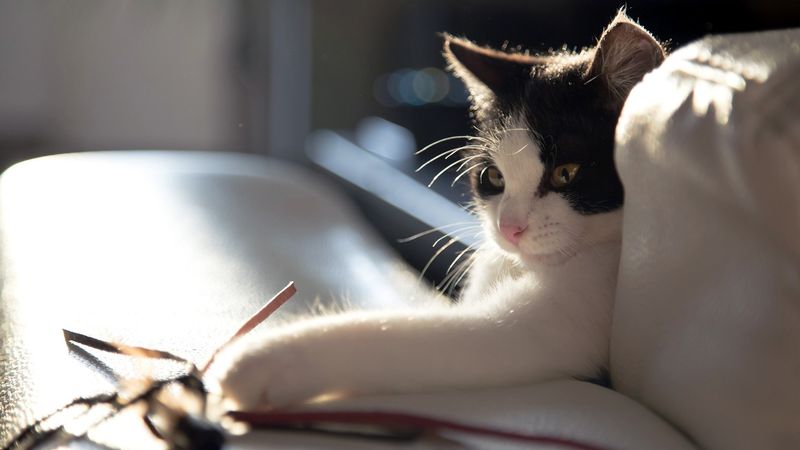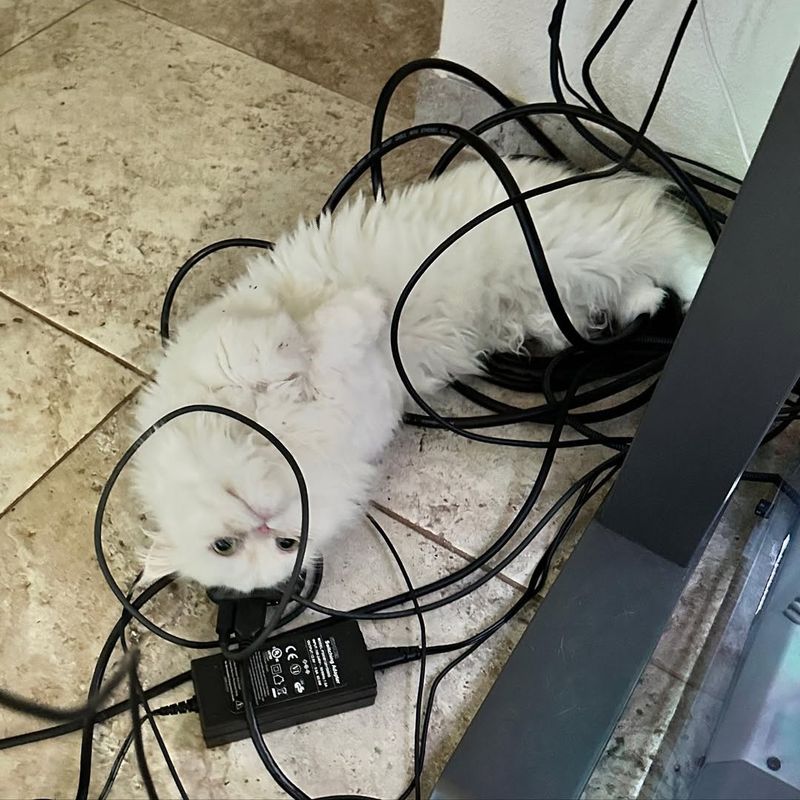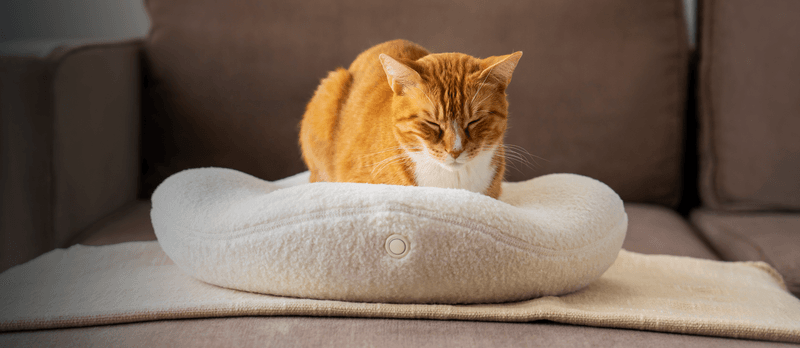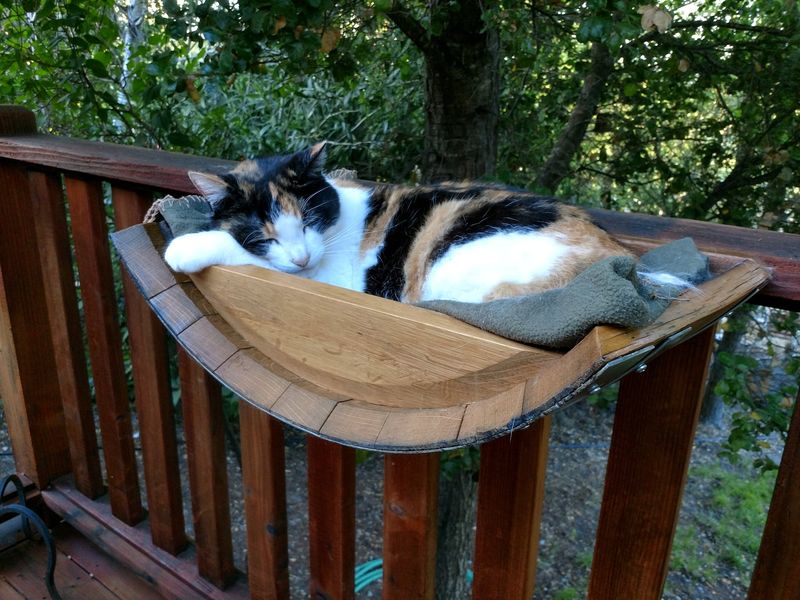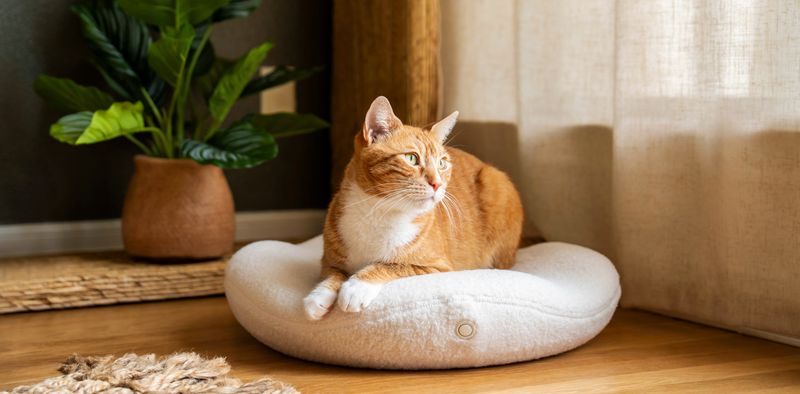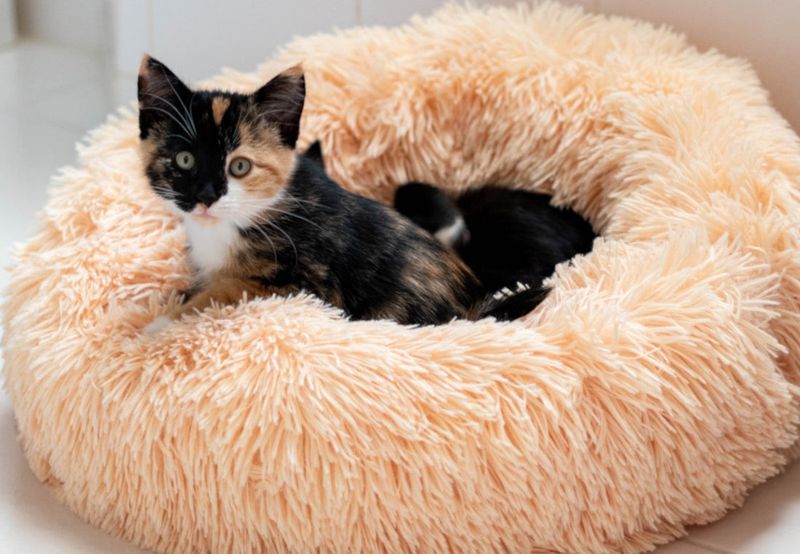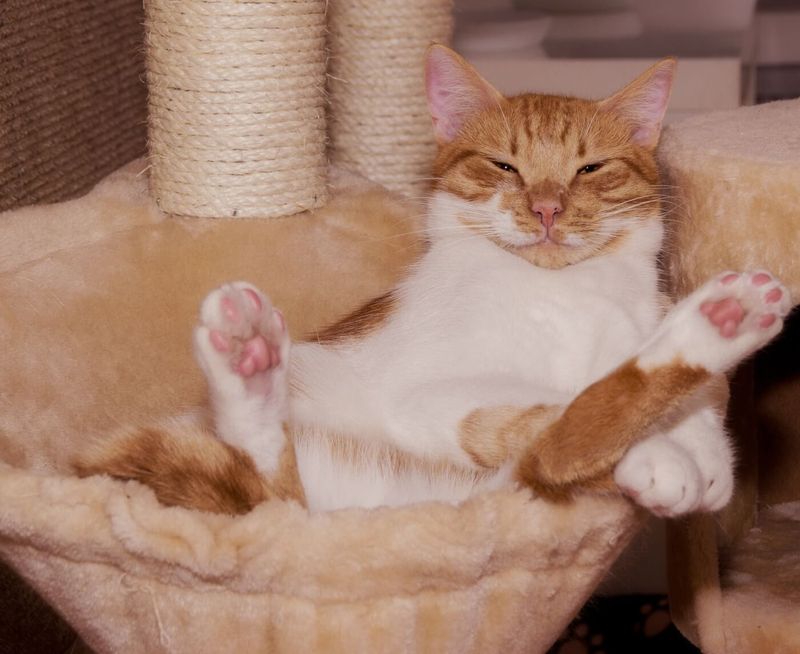📖 Table of Content:
- 1. Pick a Pet-Safe Heated Bed
- 2. Check for Built-In Thermostat Control
- 3. Feel the Surface Before Your Cat Uses It
- 4. Inspect the Cord for Damage
- 5. Avoid Extension Cords
- 6. Place the Bed on a Stable, Flat Surface
- 7. Don’t Use Outdoors (Unless It’s Made for It)
- 8. Supervise During the First Few Uses
- 9. Clean According to Instructions
- 10. Replace Worn-Out Beds
There’s nothing quite like seeing your cat curled up, cozy and content in a warm spot. Heated cat beds are a popular choice for pet parents who want to give their furry friends extra comfort—especially during colder months or for older cats with achy joints. But while these beds are great for pampering your pet, they also come with a few safety considerations you shouldn’t ignore.
Like any electrical product, heated beds need to be used properly to avoid risks like overheating, burns, or electrical issues. The good news? With just a little know-how and some quick checks, you can make sure your cat’s heated bed is not only warm and inviting but also completely safe for day and night use. Whether you’re setting one up for the first time or have had one for years, it’s always smart to stay informed.
In this guide, we’re breaking down 10 essential safety tips that will help you keep things toasty without the worry. From choosing the right model to cleaning it properly, these quick tips will give you peace of mind—and keep your cat happily purring in their favorite heated spot.
1. Pick a Pet-Safe Heated Bed
When choosing a heated bed for your pet, it’s crucial to select one specifically designed for animals, rather than using a human heating pad. Pet-safe heated beds are engineered to operate at low voltage, making them safe for long-term use. These beds maintain a low, steady temperature, which is ideal for your pet’s comfort and safety. Human heating pads can reach higher temperatures and pose a risk of overheating or burning your pet. Therefore, always opt for a product that clearly states it is intended for pet use. This ensures a safer and more comfortable experience for your furry friend.
2. Check for Built-In Thermostat Control
A heated pet bed with a built-in thermostat ensures your pet stays comfortable without the risk of overheating. The thermostat should automatically adjust the bed’s temperature to align with your pet’s body heat. This feature not only enhances comfort but also provides peace of mind regarding safety. When selecting a heated bed, look for models that advertise automatic temperature regulation. This capability is particularly beneficial for prolonged use, as it prevents the bed from becoming excessively warm. Smart thermostat controls ensure a consistent and safe heating experience for your pet.
3. Feel the Surface Before Your Cat Uses It
Before allowing your pet to settle into their new heated bed, always check the surface temperature with your hand. The bed should feel gently warm, similar to body temperature, and not hot to the touch. This quick test can help prevent any discomfort or potential harm to your pet. Feeling the bed’s surface will quickly alert you to any issues with overheating. If the bed feels uncomfortably warm or hot, it may be defective or improperly adjusted. A simple hand test ensures the bed is at a safe and comfortable temperature for your pet.
4. Inspect the Cord for Damage
Regular inspection of the electrical cord is vital for maintaining a safe environment for your pet. Cats, in particular, are known for chewing on cords, which can lead to dangerous fraying or damage. Check the cord frequently for any signs of wear, such as bite marks or exposed wires. If you notice any damage, it’s essential to unplug the bed immediately and replace the cord before further use. Using a cord cover can help prevent future chewing incidents. Ensuring the cord is intact and safe will protect your pet from electrical hazards.
5. Avoid Extension Cords
To maintain safety, always plug your heated pet bed directly into a wall outlet. Avoid using extension cords or power strips, as these can pose a fire hazard, especially if placed under rugs or furniture. Direct connections minimize the risk of overheating and potential electrical issues. Extension cords can also be an attractive target for pets that like to chew, increasing the risk of damage and electrical hazards. By connecting the bed directly to a wall socket, you ensure a stable power supply and reduce the risk of electrical malfunctions.
6. Place the Bed on a Stable, Flat Surface
Ensure your pet’s bed is positioned on a flat, stable surface to maximize safety and comfort. Avoid placing it on wobbly furniture or in areas prone to spills, as stability is crucial for safe operation. A flat surface prevents the bed from tipping or shifting during use. Maintaining a clean and dry environment around the bed further enhances safety. A stable setup minimizes the risk of accidents or damage to the heating element and ensures your pet enjoys a secure and comfortable resting place.
7. Don’t Use Outdoors (Unless It’s Made for It)
Most heated pet beds are designed exclusively for indoor use and should not be placed outdoors unless they are specifically rated for it. Outdoor conditions can introduce moisture and other hazards that compromise the bed’s safety and functionality. If you need a heated bed for outdoor use, such as for a porch or barn cat, look for a model that is explicitly weather-resistant and suitable for outdoor environments. Ensuring the bed is used in its intended setting prevents damage and keeps your pet safe and warm.
8. Supervise During the First Few Uses
When introducing a heated bed to your pet, supervision during the initial uses is key. Observe your pet’s reactions and behaviors to ensure they are comfortable and not showing any signs of distress. Some pets may be curious or cautious around new items. Monitoring your pet helps you identify any potential issues, such as your pet avoiding the bed or attempting to chew the cord. Early supervision ensures the bed is functioning correctly and allows you to make adjustments to enhance comfort and safety for your pet.
9. Clean According to Instructions
Proper cleaning of your pet’s heated bed is essential for hygiene and longevity. Always follow the manufacturer’s instructions, which typically involve removing the heating element before washing. Never submerge the electrical parts in water, as this can cause damage. Most heated beds have removable covers that can be washed separately. Regular cleaning prevents the buildup of dirt and odors, ensuring a comfortable and appealing environment for your pet. Adhering to the cleaning instructions also prolongs the life of the bed.
10. Replace Worn-Out Beds
Over time, heated pet beds can wear out, develop uneven heating, or emit strange odors, signaling it’s time for a replacement. Using a bed that shows signs of wear can pose risks to your pet’s safety and comfort. Regularly inspect the condition of the bed, checking for any wear and tear that could lead to malfunction. Investing in a new bed when necessary ensures your pet continues to enjoy a safe, warm, and cozy place to rest. Prioritize your pet’s well-being by upgrading worn-out models promptly.
